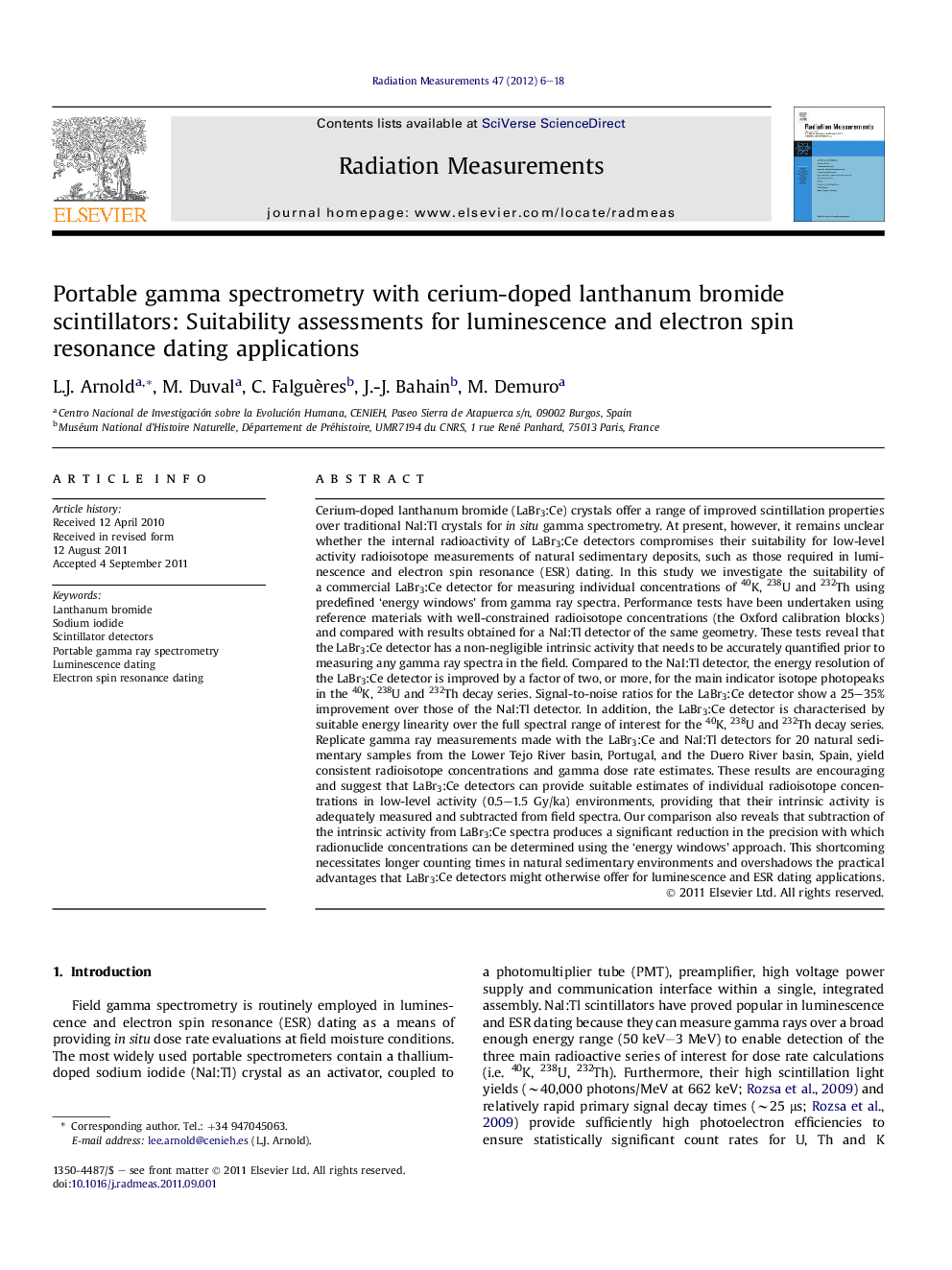| Article ID | Journal | Published Year | Pages | File Type |
|---|---|---|---|---|
| 1888570 | Radiation Measurements | 2012 | 13 Pages |
Cerium-doped lanthanum bromide (LaBr3:Ce) crystals offer a range of improved scintillation properties over traditional NaI:Tl crystals for in situ gamma spectrometry. At present, however, it remains unclear whether the internal radioactivity of LaBr3:Ce detectors compromises their suitability for low-level activity radioisotope measurements of natural sedimentary deposits, such as those required in luminescence and electron spin resonance (ESR) dating. In this study we investigate the suitability of a commercial LaBr3:Ce detector for measuring individual concentrations of 40K, 238U and 232Th using predefined ‘energy windows’ from gamma ray spectra. Performance tests have been undertaken using reference materials with well-constrained radioisotope concentrations (the Oxford calibration blocks) and compared with results obtained for a NaI:Tl detector of the same geometry. These tests reveal that the LaBr3:Ce detector has a non-negligible intrinsic activity that needs to be accurately quantified prior to measuring any gamma ray spectra in the field. Compared to the NaI:Tl detector, the energy resolution of the LaBr3:Ce detector is improved by a factor of two, or more, for the main indicator isotope photopeaks in the 40K, 238U and 232Th decay series. Signal-to-noise ratios for the LaBr3:Ce detector show a 25–35% improvement over those of the NaI:Tl detector. In addition, the LaBr3:Ce detector is characterised by suitable energy linearity over the full spectral range of interest for the 40K, 238U and 232Th decay series. Replicate gamma ray measurements made with the LaBr3:Ce and NaI:Tl detectors for 20 natural sedimentary samples from the Lower Tejo River basin, Portugal, and the Duero River basin, Spain, yield consistent radioisotope concentrations and gamma dose rate estimates. These results are encouraging and suggest that LaBr3:Ce detectors can provide suitable estimates of individual radioisotope concentrations in low-level activity (0.5–1.5 Gy/ka) environments, providing that their intrinsic activity is adequately measured and subtracted from field spectra. Our comparison also reveals that subtraction of the intrinsic activity from LaBr3:Ce spectra produces a significant reduction in the precision with which radionuclide concentrations can be determined using the ‘energy windows’ approach. This shortcoming necessitates longer counting times in natural sedimentary environments and overshadows the practical advantages that LaBr3:Ce detectors might otherwise offer for luminescence and ESR dating applications.
► LaBr3:Ce intrinsic radioactivity can be adequately subtracted from field γ spectra. ► 40K, 238U and 232Th can be accurately measured in low activity <1.5 Gy/ka deposits. ► Consistent γ dose rates obtained for 20 samples using LaBr3:Ce and NaI:Tl detectors. ► LaBr3:Ce probes suffer from poor precision when using the ‘energy windows’ approach. ► Long counting times overshadow the benefits of LaBr3:Ce probes for dating purposes.
